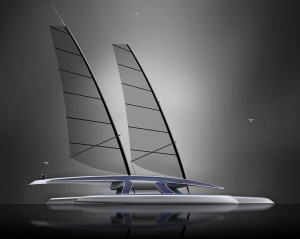
“MARS” is not headed to the red planet, although it is unmanned. This vessel is headed across the Atlantic Ocean, powered exclusively by solar technology. The Mayflower Autonomous Research Ship (MARS) is a sailing vessel designed by Shuttleworth Design for unlimited range. Carrying a variety of drones, the vessel will conduct experiments throughout the voyage. A year-long testing phase at Plymouth Univeristy and MSUBS, the ocean crossing in 2020 marks the 400th anniversary of the original Mayflower crossing from Plymouth, England to North America.
The designers said they wanted to take advantage of the opportunities that were possible without having to accommodate a crew, and to build a craft that used only renewable energy. Because the solar cell area required for efficient sailing and safety is too large in big ocean waves, the designers are developing a folding wing system to increase the solar cell area by 40 percent for use when it’s calm.
A trimaran hull was chosen for efficient low-speed traveling and to keep the solar array sufficiently high above the water to reduce wave impact. Without the need to accommodate a crew, the center hull has been kept low to the water and the wings and deck are separated and raised above on struts. This also allows waves to break through the vessel and significantly reduces roll induced by wave impact.
The two-masted soft-sail rig, which will enable a top speed of around 20 knots, is designed to work with both or either sails hoisted, giving three sail combinations for varying wind speeds. Each sail is simply controlled by a single sheet, and the sails can stow into the deck taking up minimal space. stowing the sails while motoring reduces windage and eliminates shadows cast over the solar cells on the deck, while allowing the masts to stay standing to carry navigation lights, the designers explained.
 TEXTILES.ORG
TEXTILES.ORG


